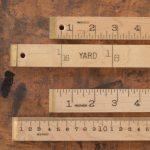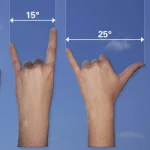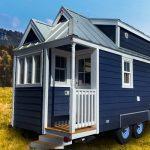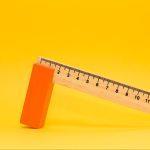Mini Washing Machine Size Charts
One common piece of household equipment is the washing machine, sometimes known as a laundry machine, clothes washer, washer, or just wash. In contrast to dry cleaning which employs different cleaning solutions and is typically performed by specialized businesses, water-based machines are typically meant when this phrase is used. The user mixes with the wash water laundry detergent, available in liquid and powder forms (skip straight to the mini washing machine size charts).
If you have a small apartment or house, a portable washer is a must-have. There is also no access to a full-size machine. These machines are portable (portable wash machine) and may be taken from a closet or other storage space to the kitchen or bathroom, where they can be connected to a water supply and used to wash clothing.

You can’t get completely clean laundry if you stuff the washing to the gills. Because of insufficient contact time with the cleaning agent, some items of clothing may keep their original stains and odor if the mini machine is overcrowded. Don’t overload your mini machine by exceeding the recommended load size; instead, use the size chart provided by your manufacturer.
You can easily figure out the size of your compact machine even if you’ve misplaced the owner’s manual. This is useful if you’re shopping for a new washing machine but want one with the same capacity as the one you’re replacing. Knowing how many items per load your mini washer can handle is also important for optimal cleaning outcomes.
Please refer to the criteria below for help in determining the washing tub size, the weight of your dirty clothing, and other factors.
Jump right into the Frequently Asked Questions
Related: Jar Size Guide: How to Choose the Right Size?, Wine Bottle Sizes & Different Types by Name & amount of glasses Blackstone Griddle size and barbecue dimensions
Mini Washing Machine Size Table of Contents
- Portable mini washing machines size chart
- Load Capacity by mini-washer Size
- Mini washing machine laundry load capacity size guide
- How to choose the right mini washing machine
- Frequently asked questions
Portable mini washing machines size chart
Related: Fridge Size Chart – Refrigerator dimensions and Buying Guide
| Sr. No | Mini Washer | Size | Weight | Washer Load Capacity | Spin Tub Load Capacity |
| 1 | Haier HLP21N Pulsator Portable Washer | 7-1/4 x 17-3/5 x 30 inch 18.4 x 44.7 x 76.2 cm | 43 lbs 19.5 kg | 6 lbs 2.7 kg | N/A |
| 2 | Giantex Twin-Tub Portable Washing Machine | 24.8L × 15D × 28.5H inch 63L x 38.1D x 72.4H cm | 29.3 lbs 13.3 kg | 11 lbs 5 kg | 6.6 lbs 3 kg |
| 3 | SUPER DEAL Twin-Tub Portable Washer | 23L x 13.5W x 26H inch 58.4 x 34.3 x 66.04 cm | 26.5 lbs 12 kg | 8 lbs 3.6 kg | 5 lbs 2.3 kg |
| 4 | Magic Chef Portable Washer | 31.5H x 18.1D x 17.7W inch 80.01 x 46 x 45 cm | 44 lbs 17.3 kg | 5.5 lbs 2.2 kg | N/A |
| 5 | DELLA Portable Washer | 28-1/4H x 14-1/2L x 24W inch 71.8 x 36.8 x 61 cm | 33 lbs 15 kg | 8.8 lbs 3.5 kg | 4.4 lbs 1.73 kg |
Load Capacity by Mini-washer Size
Related: Sink Base Cabinet Size Chart – Your Guide to the Standard Sizes
| mini Machine Type* | Cubic Feet | Pounds of Laundry Per Load |
| Compact washing machine | 1.5 to 3.4 | 4 to 8 lbs 1.8 to 3.6 kg |
| Standard models | 3.5 to 4.4 | 12 to 16 lbs 5.4 to 7.3 kg |
| Larger capacities | 4.5 to 5.0 | 16 to 20 lbs 7.3 to 9.1 kg |
| Extra-Large | 5.1 to 6.2 | 20 to 25 lbs 9.1 to 11.3 kg |
Mini washing machine laundry load capacity size guide
Related: The complete Stove size chart with tips to get the best out of your kitchen
| Type Of Laundry | What It Weighs |
XL T-shirt | 0.5 pounds 0.23 kg |
Medium Blue Jeans | 1.6 pounds 0.73 kg |
Medium Sweatshirt | .9 pounds 0.4 kg |
One Full-Size Bed Sheet | 1.3 pounds 0.59 kg |
One Large Bath Towel or Beach Towel | 1.6 pounds 0.73 kg |
How to choose the right mini washing machine
Related: Hydro flask size chart by type, volume and usage, Bar Sink Dimensions and Measuring Guide for Kitchen Sink sizes
The Formula to Calculate Tub Capacity of a Mini Washer
Use this equation to calculate the volume or holding capacity of the compact washing machine; assuming all measurements are in feet.
Equation: Volume (cu. ft.) = pi × r × r × D
For the equation, follow this key:
- pi = ~3.14
- r = radius (feet); remember r = diameter divided by two
- D = depth (feet); in classic geometrical terms the height of the cylinder
- Note: The units result in (cu. ft.). ft × ft × ft = cubic feet.
What dimensions do a mini washing machine have?
Standard dimensions for a front-loading mini machine washer are 27 inches (or 63.5 centimeters) in width, 39 inches (or 99.06 centimeters) in height, and 32 to 34 inches (or 81.28 to 86.36 centimeters) in depth. Top-loading full-sized machines are normally just 27 inches wide, 42 to 44 inches tall, and 27 to 28 inches deep.
Allow at least six inches of distance between the rear wall and the appliance for hoses and ventilation. For side-by-side units, leave an additional inch of space between the washer and dryer.
Dimensions of a standard side-by-side mini washing machine
To accommodate a typical side-by-side washing machine and dryer, a 56-inch wide opening is required. If your washer and dryer are front-loading models, you’ll need at least four feet of clearance in front of the machine for loading and unloading clothes.
Keep in mind that top-loading machines need at least two feet of headroom for the lid to open and close.
To avoid stooping excessively when loading or unloading, consider elevating your Whirlpool front-load washer and dryer by placing them on a pedestal.
The standard capacity of a washing machine is three to five cubic feet, whereas a dryer is five to seven cubic feet.
Also, front-load washers rarely go bigger than five cubic feet in size, but top-load washers can sometimes be a little bigger than that.
Mini Washer machine measurements for stacking
Stackable washers and mini washing machines with front-loading mechanisms are excellent options to consider investing in if your home has more vertical space than horizontal space available for furniture arrangement. Normal measurements for their stackable washers and dryers are 24 to 28 inches in width, 39 inches in height, and 32 to 34 inches in depth.
In order to fit a mini washer into the space, you’ll need a laundry area of approximately 29 in / 73. 7cm wide, 80 in/ 203.2 cm tall, and 32 in/ 81.28 cm to 34 in/ 86.36 cm deep.
Remember to leave a space of at least six inches between the back of the appliance and the wall so that air may circulate. When you stack home appliances in a closet, you should always leave at least one inch of space between the appliance and the wall on all sides of the equipment.
Dimensions of a mini washing machine
They designed compact washers to fit within apartments, small homes, and closets. The appliances can be stacked, lined up side by side, or even installed beneath the counters, giving you a wide range of options for optimizing your kitchen’s layout. Standard small washers measure 24 inches in width, 33 to 36 inches tall, and 24 to 26 inches deep.
Height will increase to accommodate stacking. Consider a space that is 24 inches in width, 66 inches to 72 inches in height, and 24 inches to 26 inches in depth.
If you want to put mini washers side by side, you’ll need a space that’s about 48 inches wide, 34 inches tall, and 25 inches deep. Keep a gap of an inch or more between each piece of major home equipment.
Always leave at least six inches of space at the rear for hoses and ventilation, whether you’re stacking or aligning items side by side.
Sometimes, a ventless dryer’s smaller installation depth compared to a standard-sized vented dryer might provide even more space-saving potential. Their storage capacities are typically between one and three cu. ft., or approximately half that of a normal dryer.
Learn the correct way to measure for a new pair of laundry appliances.
Measure the laundry room’s height, breadth, and depth beside your mini washer’s specifications to rule out any potential issues with fit.
When placing appliances next to one another, provide a gap of at least one inch between each one and a clearance of six inches from the rear wall.
- First, determine the space between the mini-washer machine.
Take the measurements from left to right, across the width of your mini washer. To allow for some wiggle room, add an extra inch to the width so that there is enough breathing room between the walls on either side. We recommend it to leave a space of one inch between appliances to assist reduce noise. - The second step is to take the measurements for the height of the mini washing machine.
Take a measurement from the floor to the highest point of your mini washer. To be on the safe side, we recommend adding two feet to the height of the unit to facilitate loading and unloading. - Third, find the depth of your mini washing machine.
Finally, from front to back, you’ll need to know the depth of your mini-washing machine. Add around six inches to the depth dimensions you took so you have room for the lines and vents that are located in the back of the appliance. If you’re using a front-loading mini-washer, you’ll need an extra four feet of clearance on either side for loading and unloading.
Make sure the closet doors can open all the way if you plan to store the appliances there. - Plan a route for your mini washing machine to enter the house.
The fourth step is to measure and plot a route for the delivery of the mini-washing machine.
Once you have your measurements, you may plan the most efficient entryway to your chosen installation site. Start at the front door to ensure the mini-washer machine will fit through doors and down corridors.
Appliances both black and side-by-side, for washing
Choosing the best mini washer for your family’s needs is easier said than done, but you have options. Be sure to think about the capacity, types, and features of potential appliances before making a final decision.
Forms of the mini washer machine
- Both agitator and impeller designs are available for top-loading mini-washing machines.
- Machines with an agitator have a center post that twists and rubs against the laundry while it washes.
- A rotating cone or disc rubs together clothing in an impeller washing machine.
- Venting a clothes dryer Dryers’ standard ventilation systems are designed to vent air outside.
- Ventless dryers are far more space-efficient than traditional dryers since they don’t require a vent and instead rely on a heat exchanger to continuously recycle air through the drum and condense moisture.
Superb efficacy
Both high-efficiency washers and dryers save on energy costs, with the former also reducing water use throughout the cleaning process.
Learn more about mini washing machine sizes and different types (video)
Frequently asked questions
1. How big is a mini washer?
A standard washer has a capacity of 3.1 to 4.0 cubic feet, which means you can put up to 5-7 kilograms of laundry into it. A high-capacity washer has a capacity of 4.2 to 9.0 cubic feet, meaning you can load up to 6 kilograms of laundry into it, or even more.
2. What is the smallest size washer?
It’s possible to find a combination mini washer machine and dryer that’s only 24 inches wide and 2.2 cubic feet in size. The typical width of an American or Canadian full-size washer is 27 inches.
The smallest washer weighs between 3 and 6 kg. Its depth ranges from 44 centimeters to 60 centimeters.
The DMR 3 kg Portable Mini Washing Machine with Dryer Basket is the one we discovered to be the smallest (DMR 30-1208, Blue). It offers a 12-month warranty.
3. What is a mini washing machine used for?
Intimate or small loads of laundry are ideal for our little washing machine. Space-saving washer and dryer combos are now available, so you can get your laundry done without sacrificing convenience.
4. How heavy is a mini washing machine?
These lightweight appliances typically weigh less than 20 pounds and can be operated with a sink connection or buckets of water. When not in use, they can conveniently stash away a portable washing machine in a nook or cupboard.
5. Do portable washers use a lot of water?
Mini washers use an average of 3.96 gallons of water per cubic foot when washing a full load, though this might vary depending on the size of the tub.
Expect the wash cycle to use about 4 gallons of water and the rinse cycle to use another 4, however, this will vary depending on the load size and level of dirt.
6. What size of portable washer do I need for a family?
There are a wide variety of washing machines and water storage drums on the market; some have a tiny capacity, while others have a medium capacity that is sufficient for regular cleaning. Medium-sized washers (between 1.8 and 3.5 cubic feet) are suitable for households with one to two people. If your family has over three members, choose a large washer (3.6 cubic ft to 5.1 cubic ft).
We think that for a family of three or four, a front-loading machine that can handle loads of up to seven kilograms would be adequate.
They do not take the aim into account, so if you are a regular traveler, for example, choose the smallest and most compact version to avoid any inconveniences.
Similarly, if you need to buy a portable washer for your RV, it’s best to get one that’s neither too big nor too small.
7. How many times can we use a Portable washing machine in a day?
The portable washing machine is yours to use as often as you choose. Manufacturers do not impose any daily limitations. However, if you care about your washing machine’s lifespan, you’ll want to use it effectively.
An effective portable washer may typically last for up to 4000 washes. You’ll have to be really efficient at using up all those cycles if you want it to survive longer than 10 years.
However, just because it hasn’t made it to 4,000 cycles yet doesn’t mean it can’t.
Conclusion
For cleaning your mini washing machine here is a small guide; drain, turn off the power to the appliance, and remove any water from the bathtub. Drain the water after the wash or rinse cycle when complete, simply turn the knob that controls the cycle to the drain position.
Make sure they securely fastened the drain line at both ends, one to the mini machine’s output valve and the other to the location where the water will be released. To make use of gravity and facilitate draining, set up the drain hose at a lower height from the surface, such as on the floor or in a bucket.
You may also put it in the bathroom’s toilet to keep water from spilling out and flooding the floor. Check that the hose’s nozzle is securely fastened to the object into which water will be drained.
Leave questions you may have in the comment section. Thank You!
Picture in this post is by Engin Akyurt on Unsplash
Related to Mini Washing Machine Size
- Barbie Doll Size : What are different sizes of Barbie ?
- Blanket sizes chart : blanket sizes and dimensions in inches & cm
- Tablecloth size chart – What are standard tablecloth sizes ?
- How Many Meters Are In A Yard?
- How Many Centimeters are 8 Inches?
- Knife Sizes and Different Types
- 4 Inches is How Many Centimeters?
- Light Bulb Base Sizes : What size light bulb base do I need?
- Tesalate Towel Size Guide
- Light bulb Size : What are the different and standard bulb sizes?
- Duvet Sizes: What is a Standard-Size Duvet?
- Single Car Garage Size and Dimensions
- How High Is A Story?
- How Much Does 1 Cup Of Rice Weigh?
- Cast Iron Skillet Sizes: What Size Do I Need?
- Dollar Bills Size Chart
- Pizza Sizes: Which One to Order?
- How To Measure A Foot Without A Ruler
- Wine Glass Size Chart
- Tiny Houses Size Charts
- How Many Inches Are In 20 Centimeters?
- How To Measure 1 Meter Without A Ruler?






















